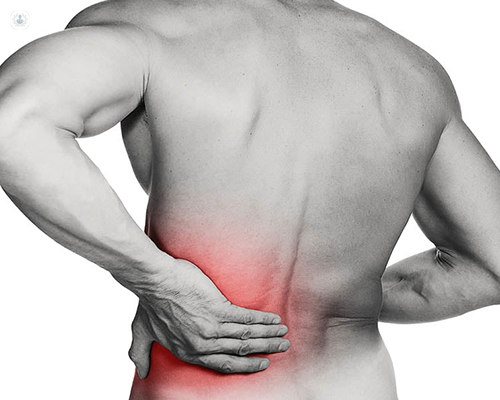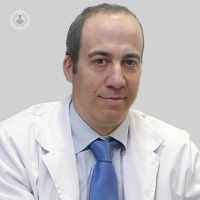All you need to know about a herniated disc
Written by:The spinal disc is composed of two parts: the nucleus pulposus, which is the central part of Gelatinous type (absorbs compressive forces between vertebrae) and outer annulus wrapper collagen surrounding wider fibrocartilage area, so as to limit rotation between vertebrae. Its main function is to allow a harmonic movement of the spine and provide support during movement.
Factors such as aging and sustained load of the column that weaken the annulus, allowing the kernel output by a fissure. This condition is known as disc herniation. There are two types of disc herniation:
- Cervical herniated disc, if you are in the upper vertebrae
- Lumbar disc herniation, if you are in the lower vertebrae.
This condition occurs most often in middle-aged and elderly, usually after strenuous activity. Other risk factors may be muscle weakness, physical inactivity and genetic diseases.
Symptoms of disc herniation
The main symptoms presented by a herniated disc are:
- Low back pain (low back) or cervical ( upper back and neck), produced by muscle contraction reflects affectation.
- Radiating pain (popularly called sciatica): stabbing pain in gluteal area that, in cases of lumbar hernia, can travel around the leg to the toes. In cases of cervical hernia, it occurs deep pain in the arm and / or forearm can reach the fingers.
- Numbness, loss of sensation and / or tingling in the area of radiating pain.
- Weakness in the mobility of the affected limbs.
- Urinary symptoms, with loss of sensation in the genital and perineal area as the first symptom. It is associated with the difficulty emptying or urinary retention.
Symptoms may worsen for several reasons: 
- By staying in the same position for a time, requiring postural changes every few minutes (10-20 minutes)
- Overnight
- By sneezing, coughing or laughing
- By bending the back or walk
Herniated disc: Diagnosis
After a thorough medical examination must be performed different diagnostic tests:
- Cervical / lumbar magnetic resonance imaging test of choice. It will show the exact location of the disc herniation and compression exerted on adjacent estructures.
- Radiography of the column: initial test used to rule out other causes of low back pain or cervical. Radiographs dynamics, stability of the column is measured.
- TC Cervical / Lumbar: useful as a complementary test to resonance, helps to assess the bone components associated with the affected area.
- Electromyogram: to determine the root and the degree of damage produced.
¿Surgery to treat a herniated disc?
It is necessary that the patient undergoes an intervention by the neurosurgeon when the following cases:
- Conservative treatment (administration of anti-inflammatories, painkillers and muscle relaxants) has failed and a persistence of pain and neurological symptoms occurs.
- Weakness in mobility or sensitivity of sudden or progressive appearance.
- urinary symptoms or loss of sensation in the genital and perineal area.
Edited by Noelia García Pino


